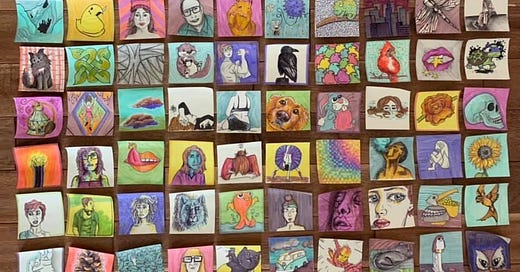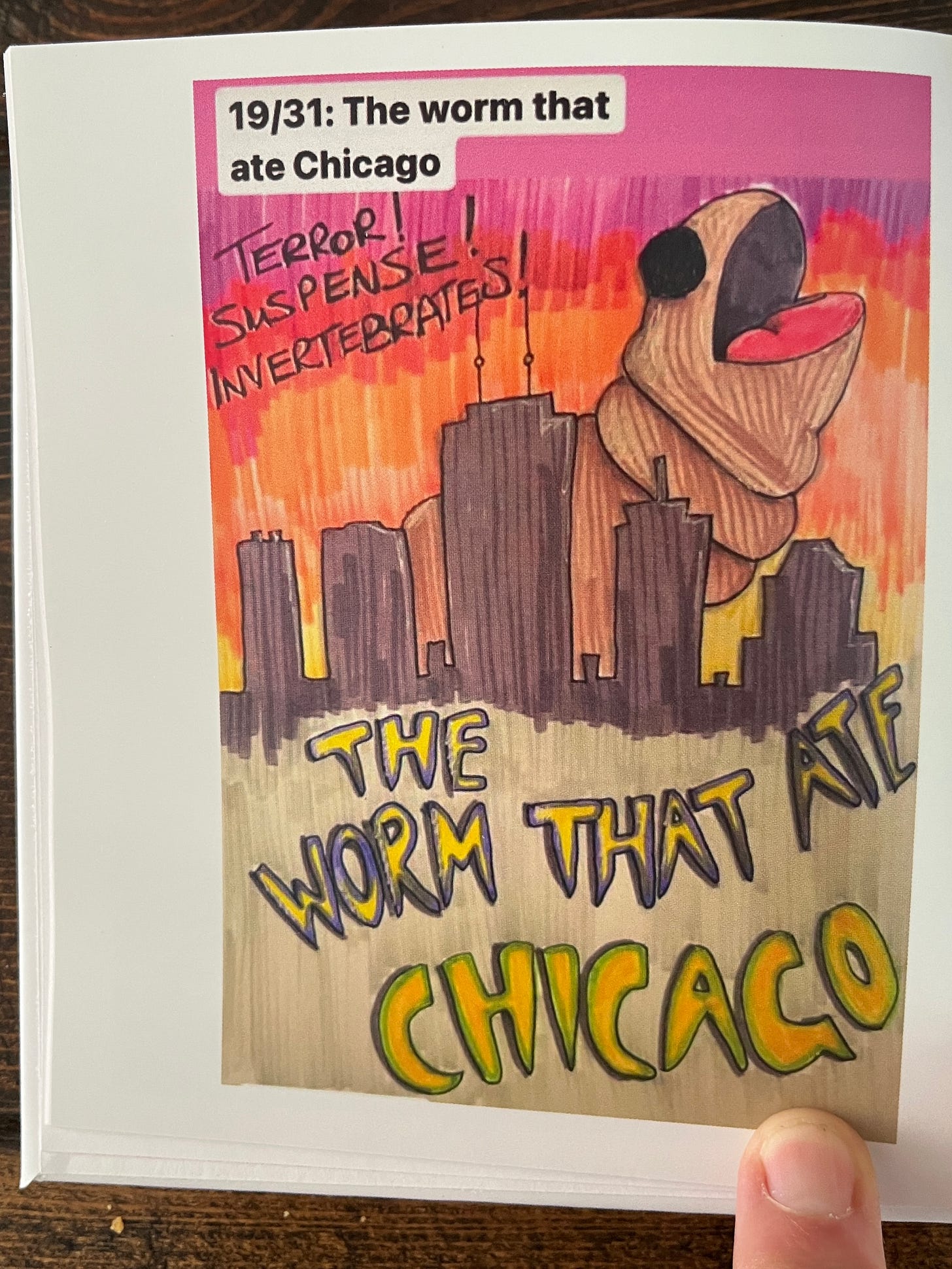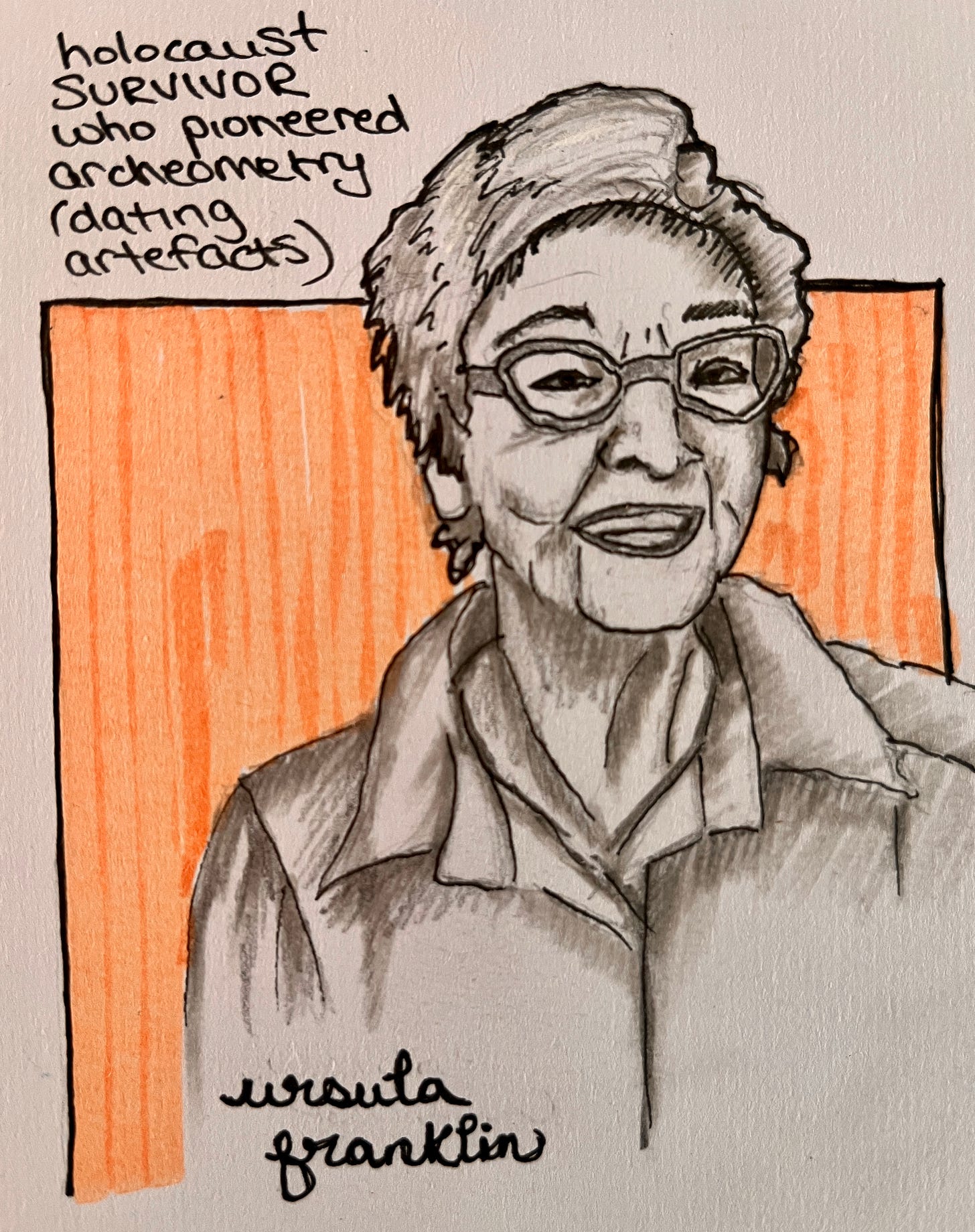#22: #SciArtSeptember - The Launch!
In which the author undertakes another art prompt challenge, and learns a whole lot about women in STEM.
Recently, I joined a Twitter community for #SciArt, in an effort to learn more about the blending of topics like chemistry, medicine, biology, with techniques like drawing, painting and model building. It’s mostly been people posting their work for others to see, but I’m hoping that there will be more dialogue as it grows.
It’s in this community that I learned about a new art prompt, #SciArtSeptember. Last year, Liz Butler and Glendon Mellow started the daily challenge, and just recently posted the prompts for Year 2.
I’ve some experience with these types of creative challenges, I’ve tried, and failed, NaNoWriMo. I’ve done photography scavenger hunts with the local camera club, where your team has 24 hours to create photos that represent the set themes, and more often than not descend into caffeinated silliness.
Then there was #100DaysOfArt in 2021, where I drew a random doodle on a sticky note and then paired it with a song in my Instagram stories.
I also did #Botober 2021, Animal Edition, in which an AI generates bizarre creature prompts for your artistic creation. Just insane mixing of words (and maybe the inspiration for DALL-E?)
Now that I look back, I clearly like these sorts of structured settings for inspiring art…
Method to the Madness
To help me focus for this challenge, I decided that I needed a theme underpinning all 30 words (again, that structure). In fairness, though, with September being “back to school” for our family, it was likely that evenings would be busy with new activities and old routines. And these sorts of prompts aren’t supposed to be stressful, but challenging in a fun way.
Considering themes, I wavered between two concepts: birds I’ve photographed this year, and females in science. The first is easier - I have so many bird photos - but as a participant from last year’s challenge noted, much #SciArt seems to be devoted to critters and creatures. Plus, I’m not super confident in my portrait skills, so it would be a good challenge. 1
So women in STEM it is.
To make things easier on myself, I started with a trace of a photo to get the general facial shape and rough placement of eyes, nose, and mouth. Then, I use the photo as a reference point, drawing (and redrawing) shadows and shapes in pencil. Once that’s done, I go over the main outlines in a black Sharpie, and use a bit of my trusty light grey Midliner for additional shadowing. I finish with a bold comic-like background in a Midliner colour, and add the name and a little blurb about the scientist.
Over the past week, I’ve done the initial trace and shading for all 30 portraits. This will make the task of finishing each much more manageable on a school night.
Without Further Ado: #SciArtSeptmber Begins!
1 - Survivor: Dr. Ursula Franklin
Holocaust survivor, research physicist, and the first female materials science professor at the University of Toronto, credited with pioneering the field of archeometry (dating metals found in archeology).
Have you done a challenge like this before, with writing or art? How did it go, and would you do another one again?
Although I try to remember lessons from an art class I took in which the teacher said that you’re not a photographer, but are capturing an essence, a feeling, the energy of the object of your art. So let’s all agree that precision / making carbon copies is not the goal?








Oh, this is excellent, I'll be watching for this!
I enjoy art challenges and have done a variety of them over the last few years. I successfully completed the 100 Day Project in 2021, and have dabbled in many others. My favorite is definitely the AI drawing prompts of #Botober. I did a mix of last years, and combined them a couple of times. The worm that ate Chicago was one of my favorites - I like drawing worms! Haha. Yours looks great. I'm really hoping there's a new batch of AI prompts this year. If not, I'm going to go back to 2020's lists because I skipped the October challenge completely that year.
I'm excited to find your newsletter (Thanks Mark!), as I enjoy the intersection of art and science.